
Naoshima Art Museums
Art Museums on Naoshima
On a nice sunny day I walked through the museum area of
Naoshima, visiting the Chichu Art Museum and
Benesse House Museum,
and visiting some outdoor sculpture exhibits.
I'm starting at the Miyanoura port, where a white metal
grid sculpture echoes the small conical peaks protruding
from the shallow Seto Inland sea.
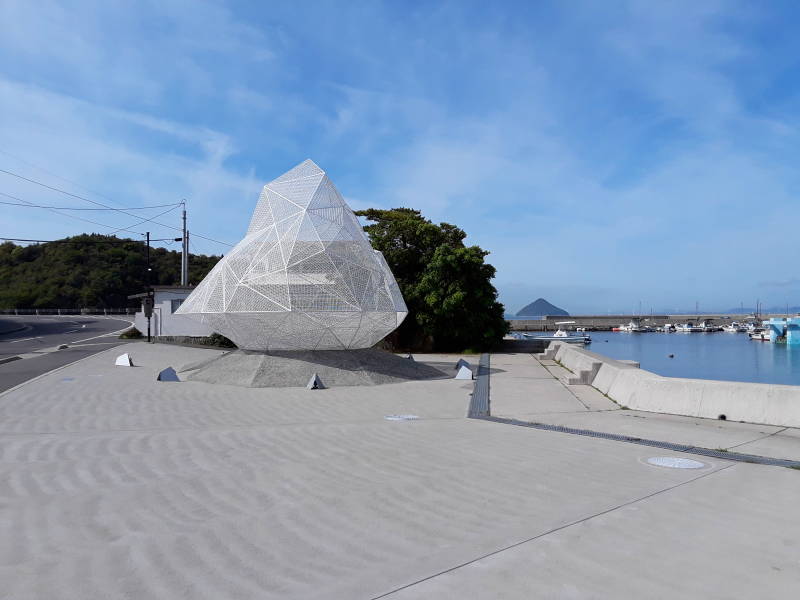
It's open, you can step right in. It's very popular with children.
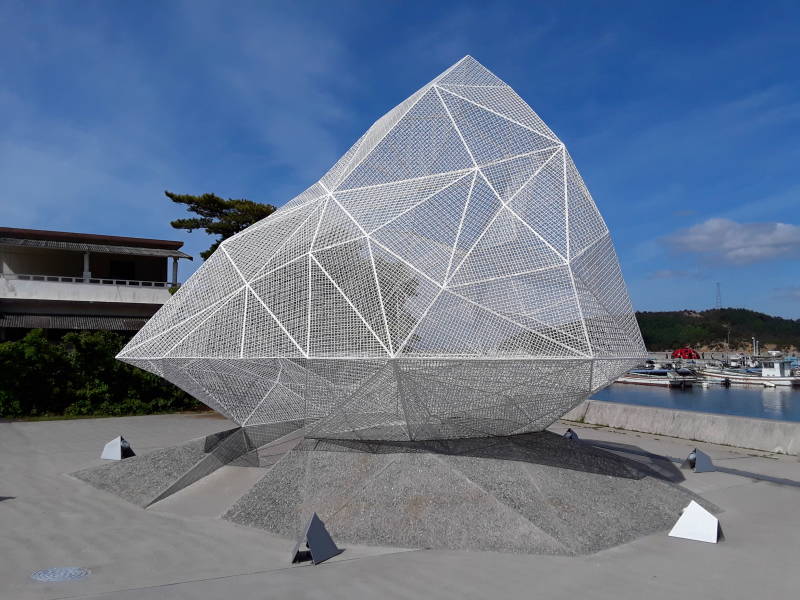
The frequent ferry connecting Naoshima to Uno is in port.

There is a bus that crosses the island between the towns of Miyanoura and Honmura, which you can ride for ¥100.
This is a free bus running through the museum area, where most other traffic is prohibited.
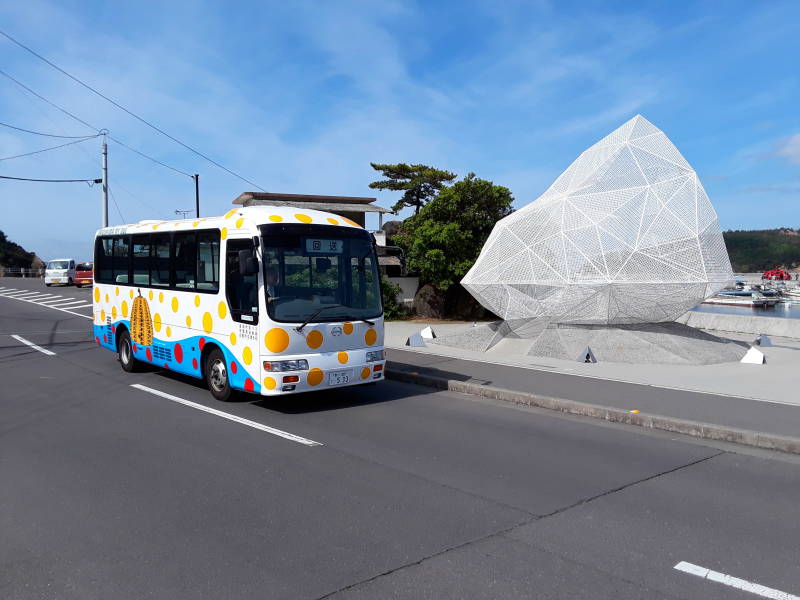
Chichu Museum
I soon came to the Chichu Art Museum. The name literally means "art museum in the earth", as it is entirely below ground level. But sections are open to the sky directly or through skylights, for plenty of natural light.
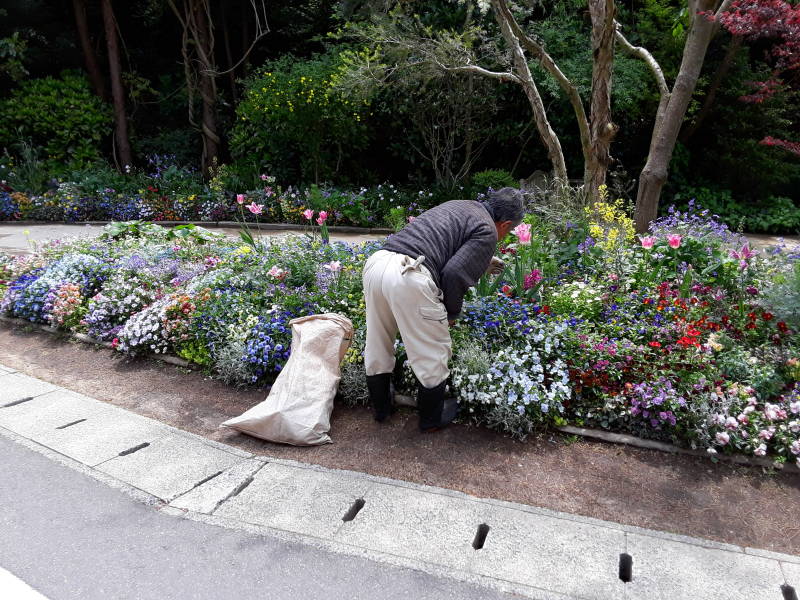
You buy your ticket at a booth by the road. Soon after my visit, they started requiring you to make a reservation in advance on the museum website. From there you approach the museum through the Chichu Garden, an area of about 400 m2 hosting about 150 types of plants and 40 types of trees. The plants and trees are all ones that appeared in Claude Monet's works and in his garden.
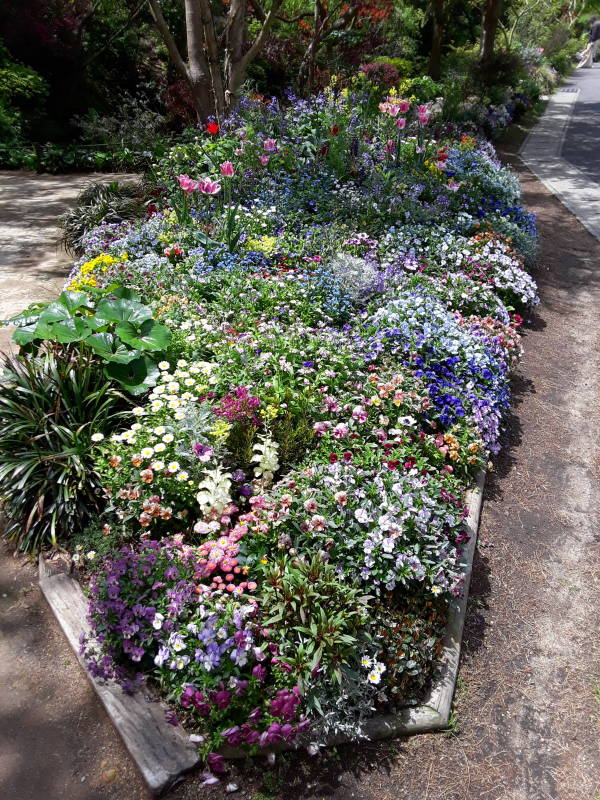
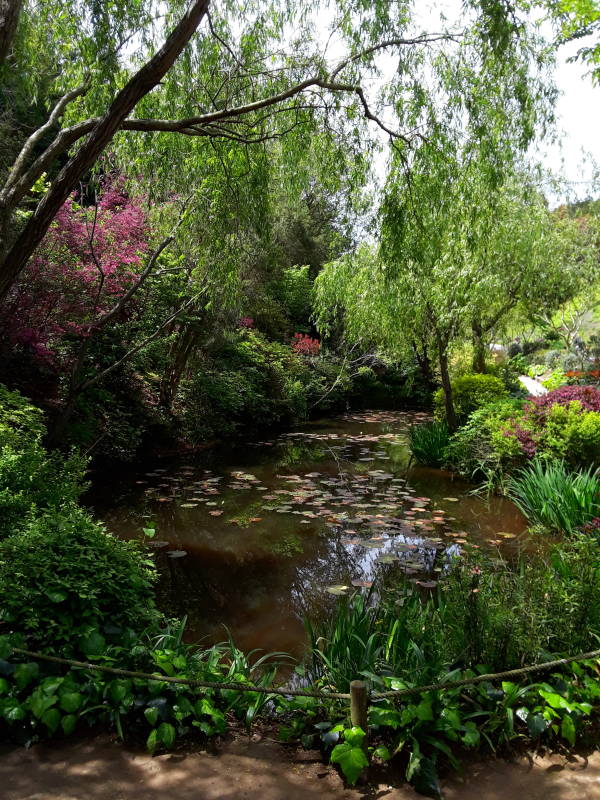
There's a small pond here with water lilies, surrounded by other plants, to get you in the mood for Claude Monet's paintings.
The Chichu museum is composed of several large concrete-walled underground spaces, housing a small number of dramatic works. It is all constructed from cast concrete, done with nearly perfect precision and finish. It was designed by Andō Tadao, who was inspired by visiting Frank Lloyd Wright's Imperial Hotel in Tōkyō to study architecture. Critics say that Andō has a "haiku-like" style, emphasizing nothingness, empty space, and simplicity. His designs use natural light and follow the natural shape of the landscape. He won the 1995 Pritzker Prize, the highest distinction in architecture, before designing this museum which opened in 2004.
One large room has paints from Claude Monet's Water Lilies series from 1915 through 1926. You step into the room facing a 200×300 cm diptych on the opposite wall. The walls to your left and right have two paintings each. 200×213 cm, 200×200 cm, 100×200 cm, and 100×200 cm.
Open Sky is a light-based space by James Turrell. A roughly cubical space, topped with a pyramidal upper space, truncated with a square opening to the sky.
There are two other light-based pieces by Turrell, Open Field and Afrum, Pale Blue, each in its own interior space.
Turrell also made one of the Art House installations in Honmura. It's a former warehouse which you enter through a twisting series of baffles into what seems like total darkness. You feel your way to a bench along one wall, sit, and wait. After 10 to 15 minutes your eyes become dark-adapted enough to see that there's something across a space. That eventually looks like a rectangular area, and then it seems to be an open space. You are invited to stand and walk over there, and you see that it's a space shaped sort of like a shallow swimming pool rotated up 90° and lit with a few small blue LEDs. Those small blue LEDs are the only illumination in the site.
Time/Timeless/No Time is a work by Walter De Maria. It's a 2.3 meter granite ball on a central landing of a broad staircase in a dramatic hall.
You can't take pictures on the museum site, so the pictures rejoin my visit on the way to the next stop.
To the Benesse House Museum
There are two small roads in the museum district on the southern part of the island. The shuttle bus and guests of the Benesse Hotel are the only users. So, you can casually walk in the road.
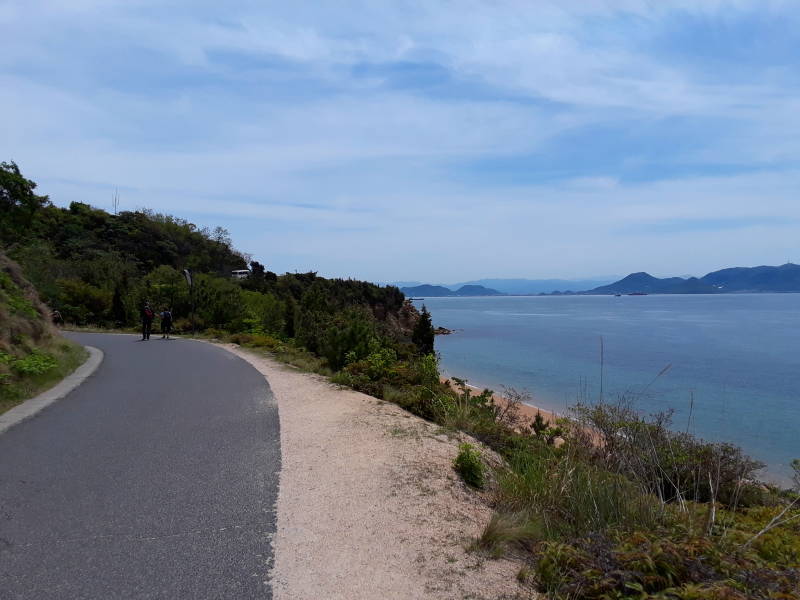
Below, we're looking to the west, with the Seto Ōhashi or Great Seto Bridge in the distance. It's a series of double deck bridges joining the large islands of Honshū and Shikoku via five small islands. It's 13.1 km long, the world's longest two-deck bridge system, with four expressway lines above two rail lines.
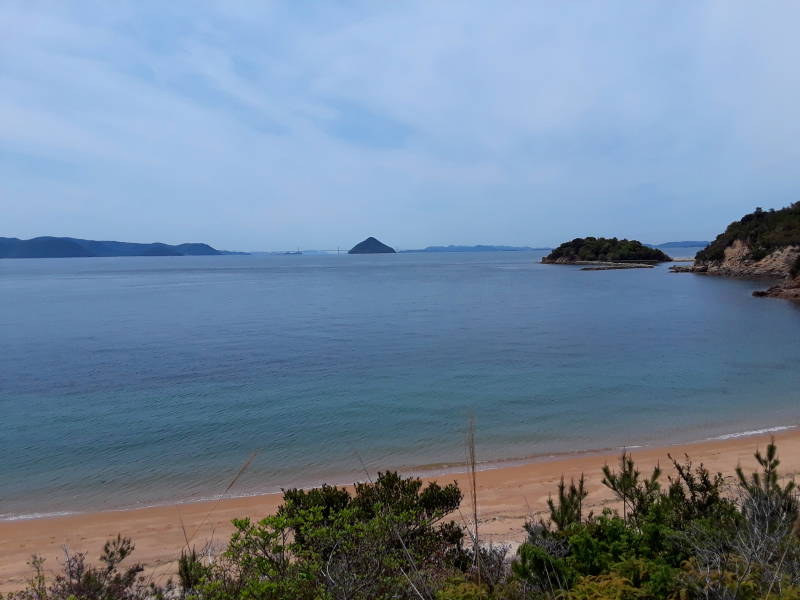
Below, Takamatsu comes into sight in the distance.
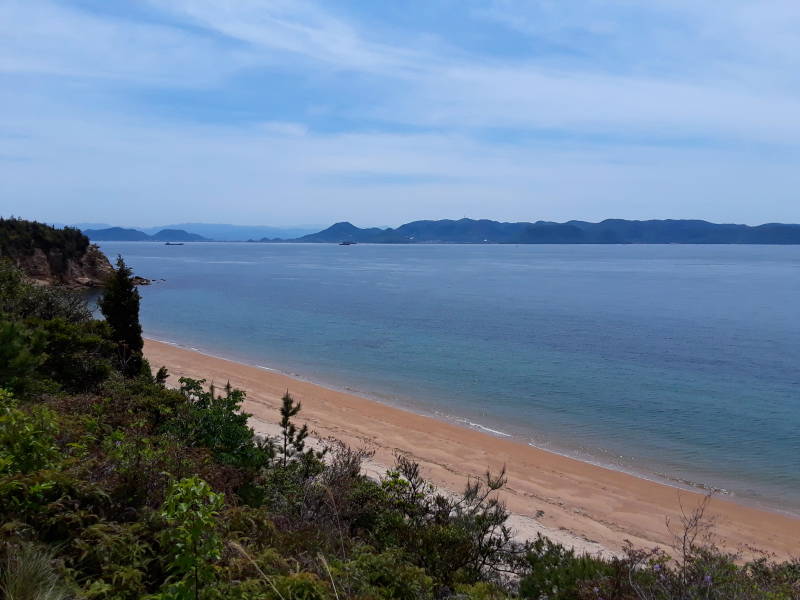

Cai Guo-Qiang's Cultural Melting Bath: Project for Naoshima is between the road and the beach near the Benesse House Museum.
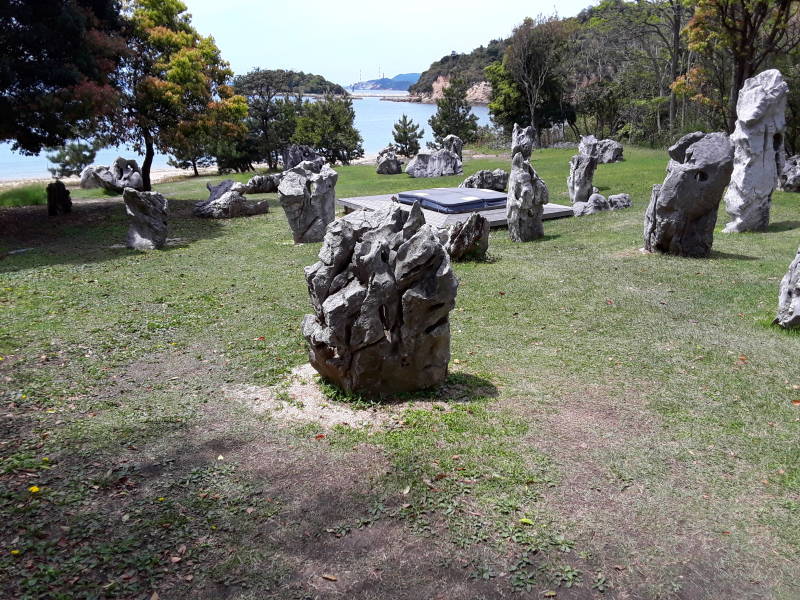
It is an arrangement of heavily eroded stones.
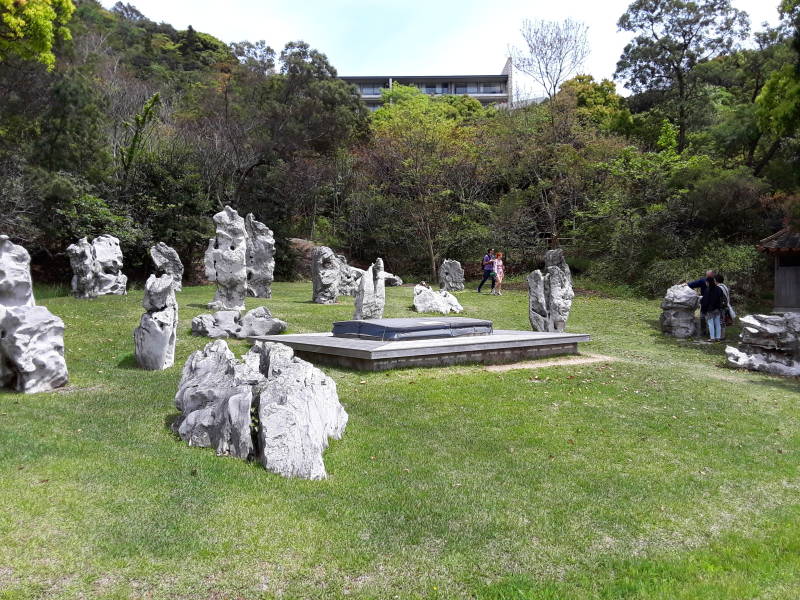


The Benesse House Museum was also designed by Andō Tadao. It was the first major art facility on Naoshima, with the museum building finished in 1992
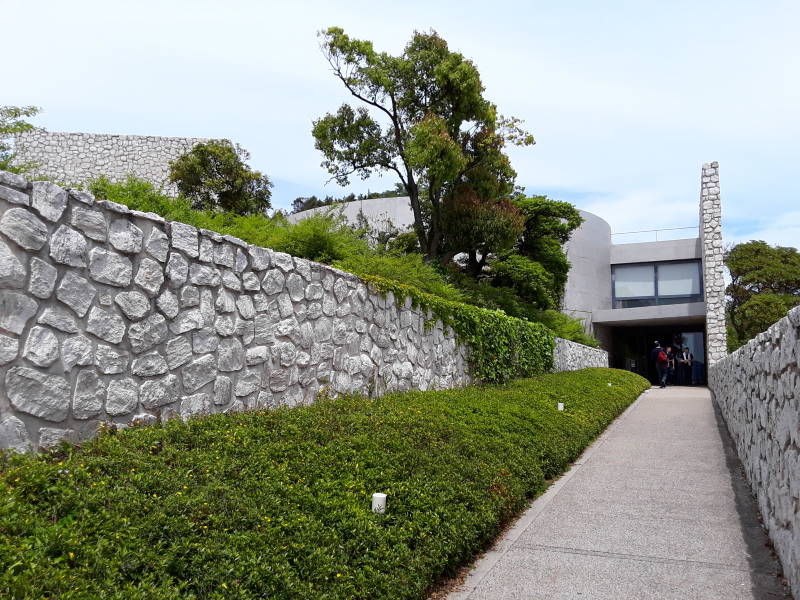
It is a somewhat more traditional art museum, with galleries containing multiple works. It includes works by western contemporary artists including Andy Warhol, Jasper Jones, Jackson Pollock, Jean-Michel Basquiat, David Hockney, and others, in addition to Japanese contemporary artists.
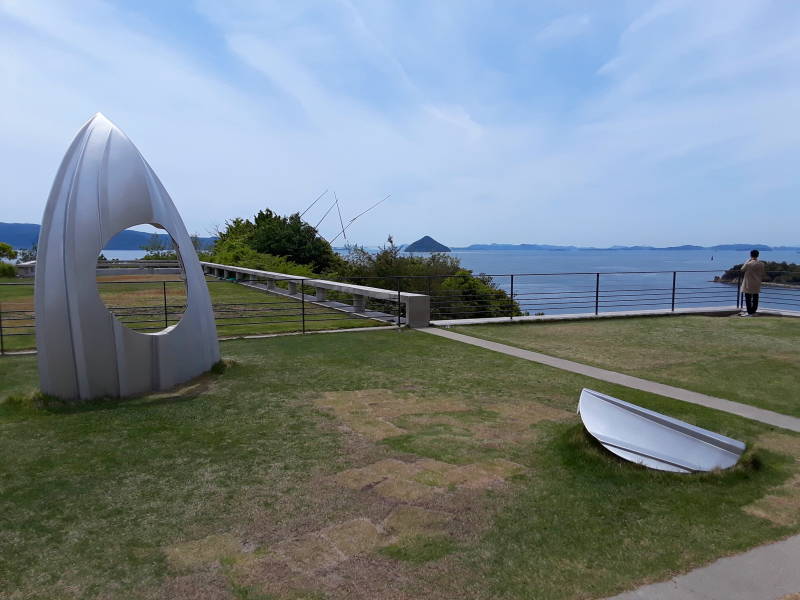
There are several sculptures outdoors on the museum grounds.
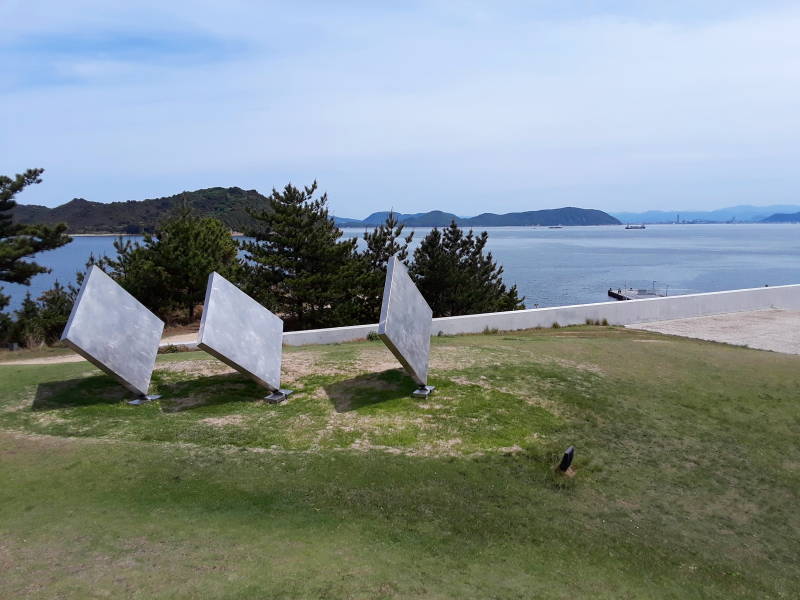
More large marble balls by Walter de Maria.
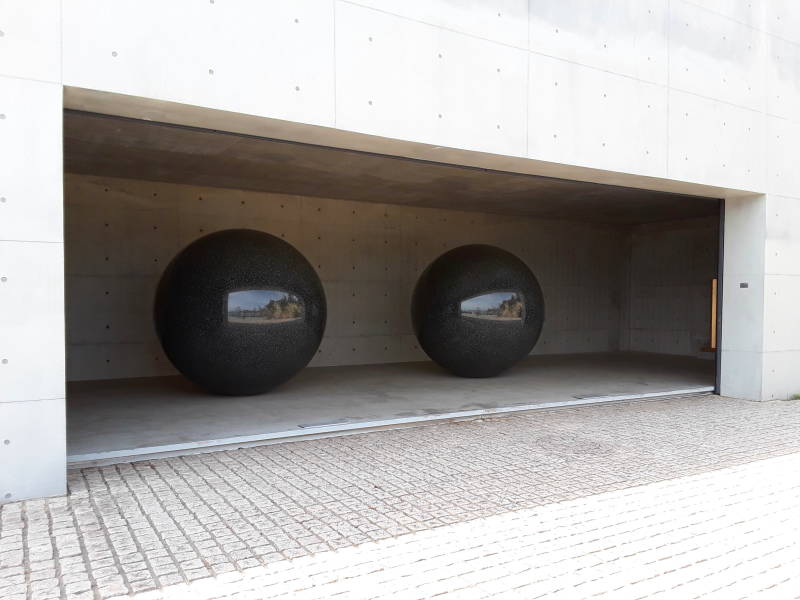
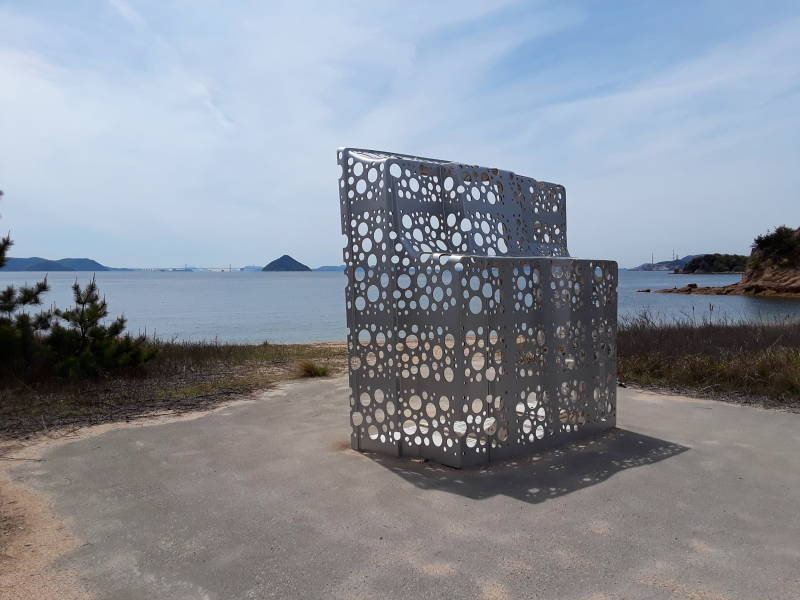
There are more pieces down by the waterline. Not an eroded tank or abandoned boat, but art.

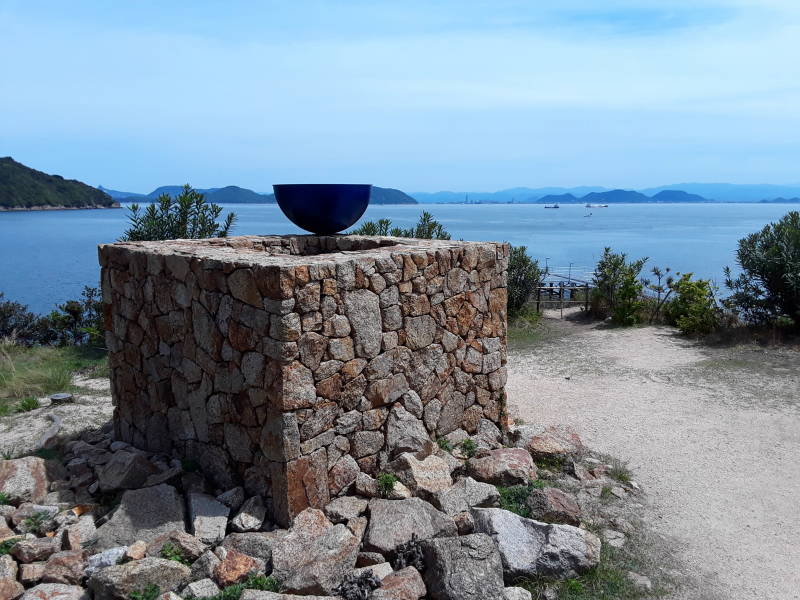
Continuing along the narrow road, we pass the Benesse House hotel.
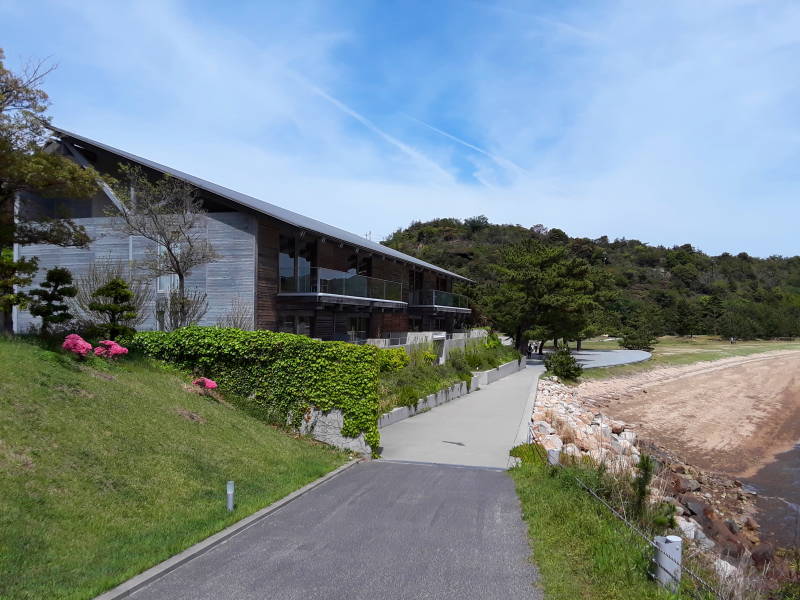
The separated wings of the hotel are surrounded by brightly colored sculptures.
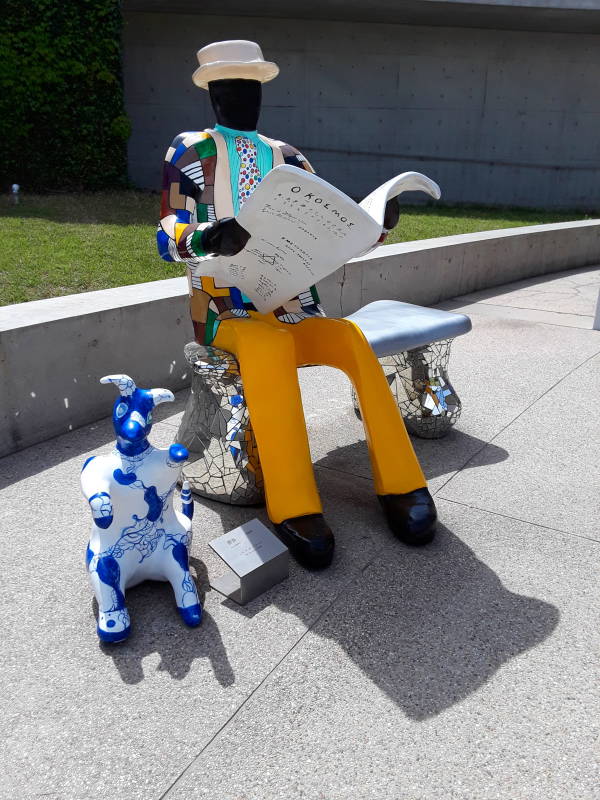
Sculpture Garden
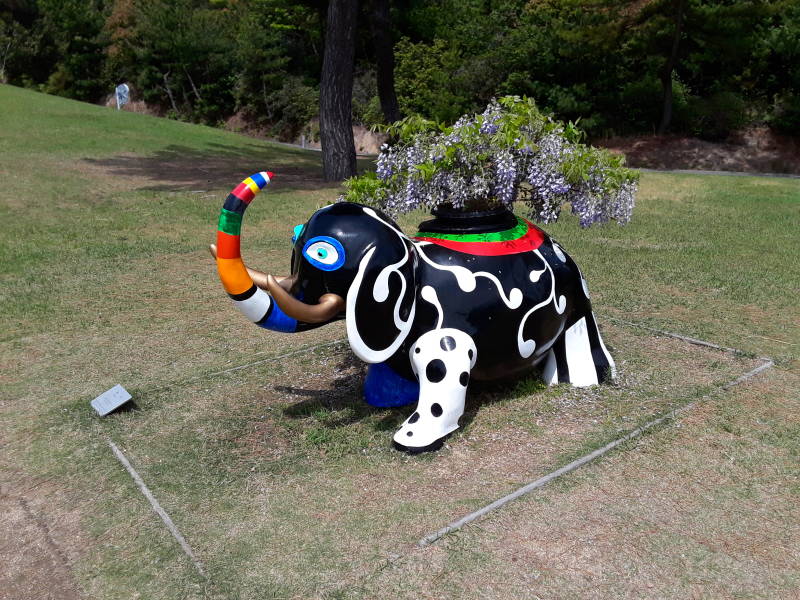
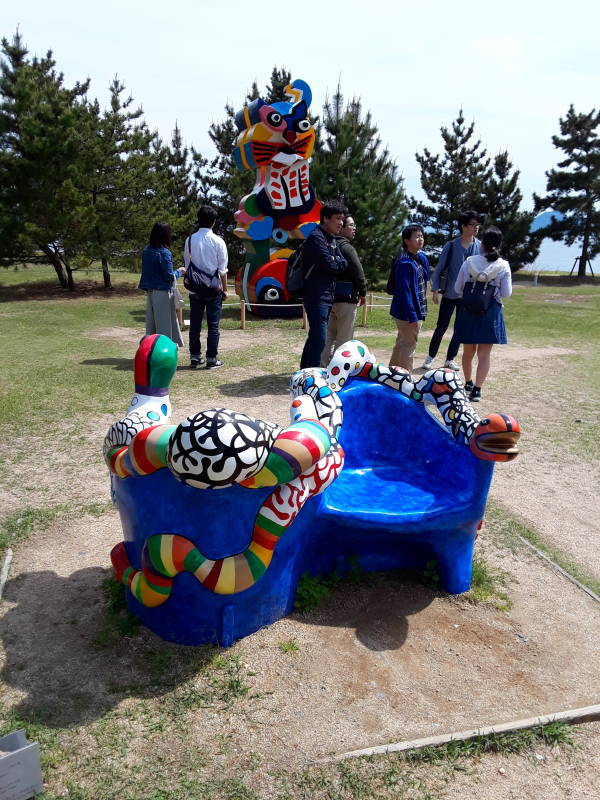
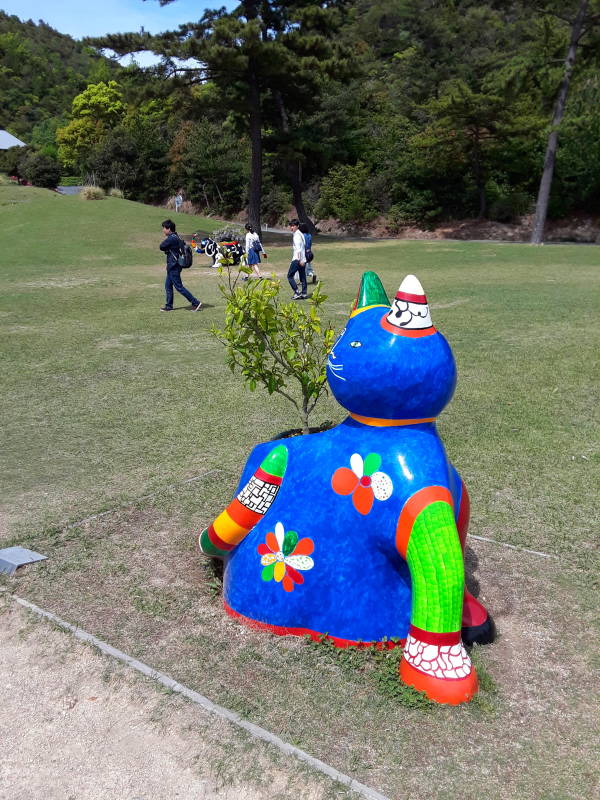
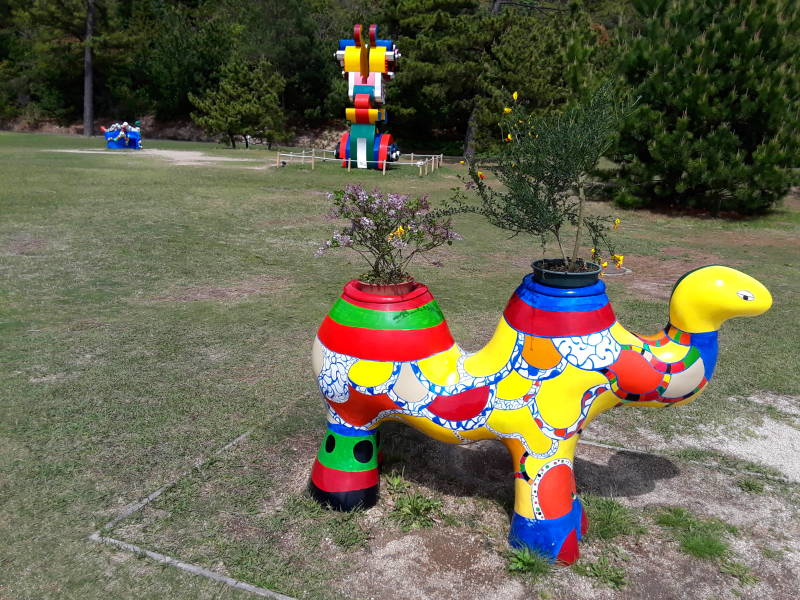
Yayoi Kusuma's Yellow Pumpkin
Yayoi Kusuma's Yellow Pumpkin has become a symbol of Naoshima and the other Art Islands.
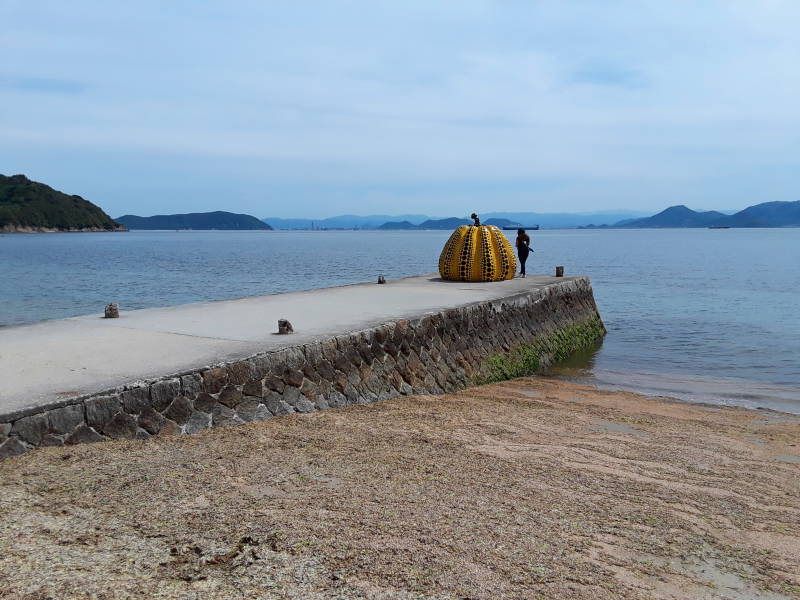
Takamatsu and the tall tower building at its port are visible in the distance, left of the pumpkin.
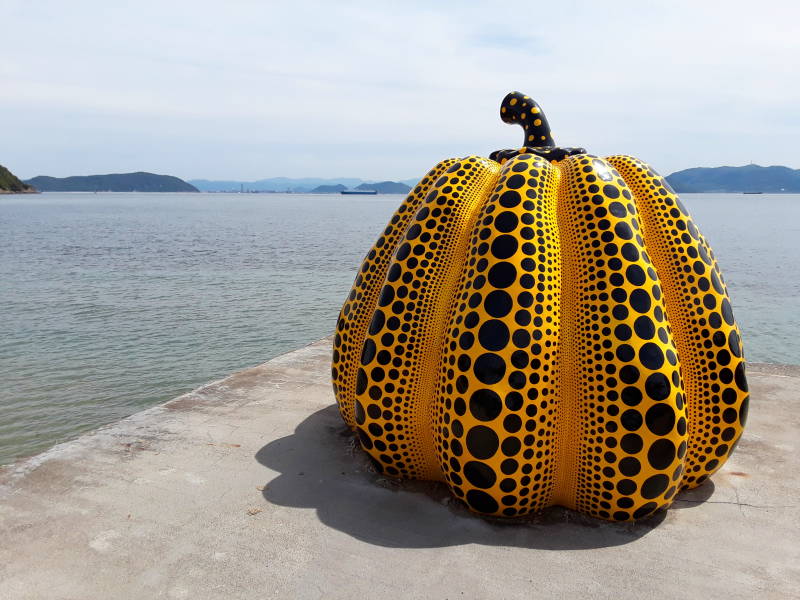
The Benesse House Museum is barely visible at the top of the hill.
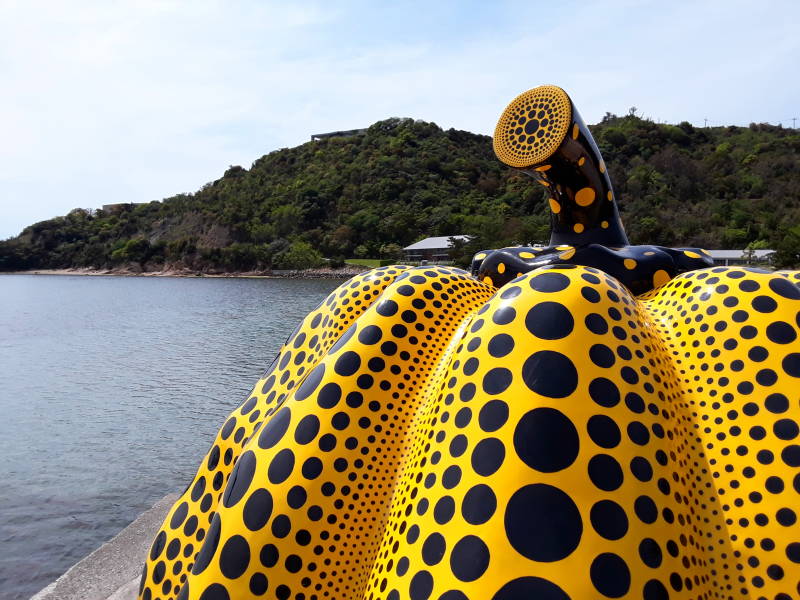
I can continue on the road into Honmura, then cross the island to Miyanoura. Then dinner in the evening at Little Plum, and a drink at Saru.
The above is specific to Naoshima. Or maybe you want to explore other places in Japan.




































